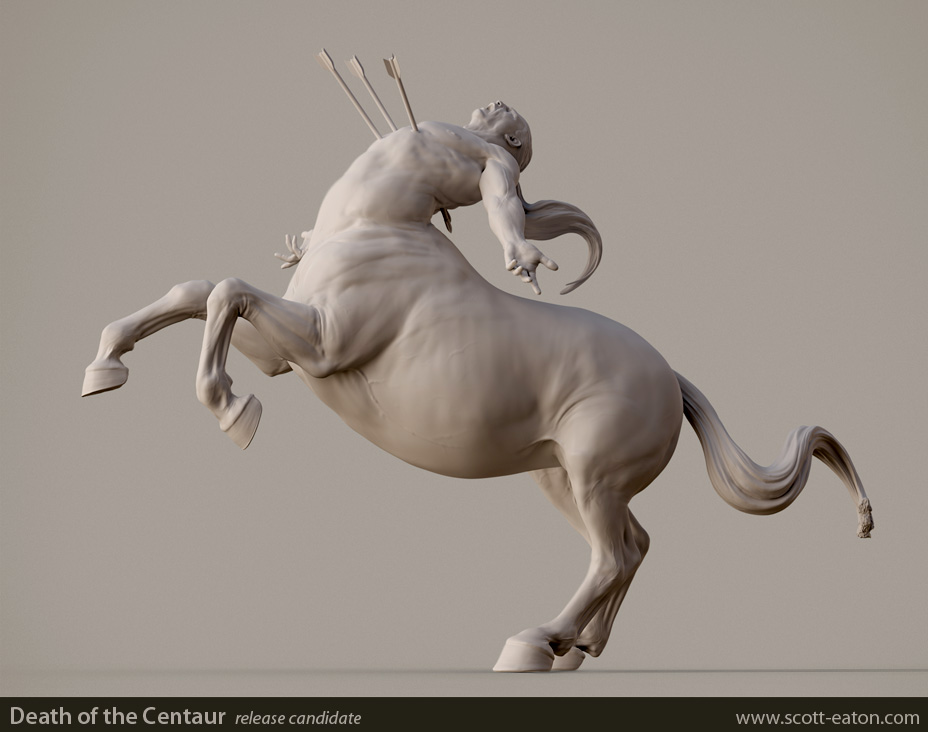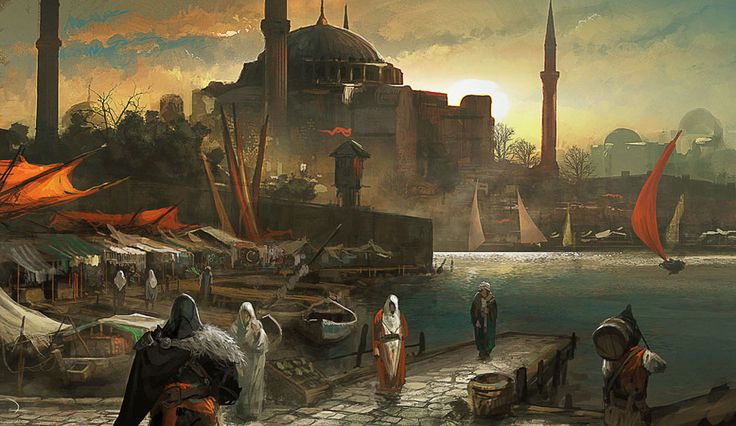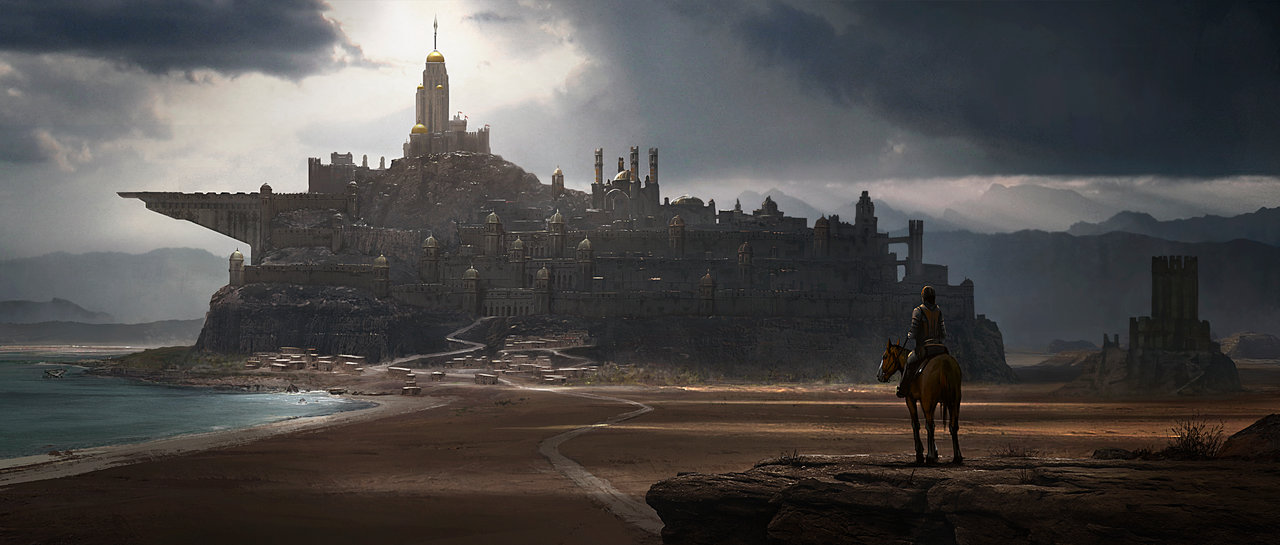Sandchase Arena of Iskendra
Arena District
Shadowed by the light of Iskendra’s Second Sun, a rampart of stone arches and columns and metapes beckons the masses to enter her gates. At the track’s entrance sits a ticket taker and several Imperial Officers handing out loaves of hardened bread and sour wine for the poor. The halls of the structure are decorated with art from across time and space, where local frescoes mingle freely with weathered statues dating back to the Mithril Age. Beyond dark vestibules of the arena walls, the stadium itself opens up to reveal the packed seating. With enough space to seat one hundred thousand souls, this truly is the largest stage in the world. The track itself is made of fine white quicksand that nearly blinds the audience with its glare. The track is lined with images of famed racers and their noble steeds rendered in beautiful bronzes and shining obsidian sculptures. Dozens of other works of art, massive obelisks, deific statues, and spires of every material imaginable line the interior of the track where the racers prepare for their competitions. On the far end of the stadium from the main entrances lies the Decurion’s Box. A golden statue of a four-horse chariot adorns the roof of the box and behind its painted columns, one can see the rich tapestries, couches, and statuary of the Imperial House.—Wyford of Heathmere's "A Tour of Old Palladia"
Purpose / Function
The Sandchase Arena of Iskendra is an outdoor stadium located in the Arena District of Iskendra and the largest amphitheatre in the Imperium of Iskendra. The Arena is used for a variety of events including special court ceremonies, religious rituals, civic engagements and public executions. However, the most well known use of the Arena is for Sandchasing, the most popular form of entertainment within the Imperium of Iskendra. These races are used as a form of entertainment for the general public, a way for the emperors to show their love for the people and their generosity, a source of tourism for the city, and as a way for citizens to see and interact with the emperor and his officials in a ritualized and public medium. Tickets for the sandchases are free and come with a complimentary loaf of bread and cup of sour wine.
Architecture
- The Arena is built into the Golden Gates, a series of walls that separate the Fountain District, Palatine Hill, and the Sunspire Bluff from the rest of the city. It runs about 450 m (1,476 ft) long and 130 m (427 ft) wide. Its stands were capable of holding 100,000 spectators.
- Several secret passageways and corridors lead through the walls themselves to the Decurion's Box, where the emperor and his court spectate. The main hallways are narrow and lead up through the bowels of the structure to the stands themselves and allow for the movement of security in the case of riots. Other passageways connect the underground bowels of the stadium to various holding pens, storage areas, and green rooms for the athletes and their animals.
- On top of these underground chambers, a track comprised of pale quicksand encircles a central raised barrier. The quicksand varies in depth, with one section called the Tomb being over 20 ft. deep, and the rest being between 4-7 ft. deep.
- The barrier, called the spina, is covered in arches, columns, statues, and obelisks taken from several conquered kingdoms during the Palladium Era. One of the arches contains several braziers where race officials light colored flames to show what lap the competitors are on.
Alternative Names
The Caelian Circus; The Caelian Arena; The Imperial Arena; The Grand Arena; The Sandchase Arena of Iskendra;
Type
Arena
Parent Location














Comments